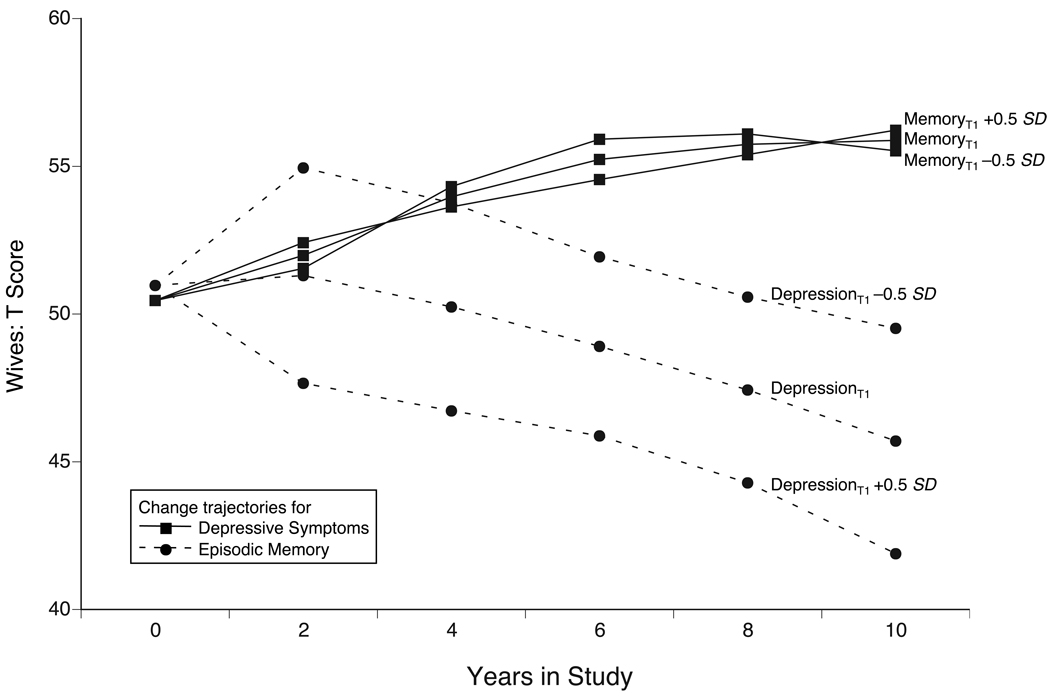Figure 3.
Graphical illustration of the differential magnitude of dynamic actor effects between episodic memory and depressive symptoms in wives and their effects over time. Dashed lines represent model-implied sample means on wives’ episodic memory from a four-variable Dual Change Score Model (Full Dynamics) for the hypothetical case that the initial sample means for wives’ depressive symptoms were varied by half a standard deviation (i.e., 5 T-score units). Under the assumption of comparable wives’ episodic memory at T1, wives with few initial depressive symptoms (depressionT1 −0.5 SD) showed relatively shallow memory decline, whereas those with more depressive symptoms initially (depressionT1 +0.5 SD) showed relatively steep memory decline subsequently. In contrast, the solid lines indicate that wives’ depressive symptoms trajectories of change over time were minimally changed as a function of different initial levels of episodic memory at T1.

